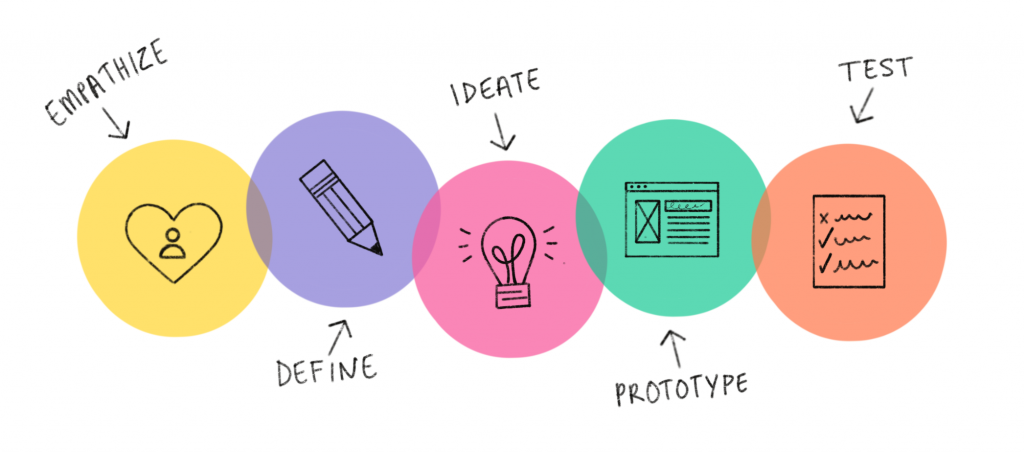
Have you found yourself on more than one occasion solving problems that arise during the development of products or services and you don't find the right solution or even know where to start looking for it?
If so, don't worry, because design thinking can help you with it.
There is no doubt that in recent years this methodology has become increasingly popular. And this is due to their ability to generate creative and innovative solutions to complex problems.
In this article, we tell you what design thinking is and why it is important for companies and organizations around the world.
What is Design Thinking
Design thinking is a process that helps to extract, learn and apply people-centered techniques to identify problems, reformulate them and generate solutions in a creative and innovative way in our businesses, designs and also in our lives.
Its main objective is to find alternative strategies and solutions that are not instantly obvious with their initial level of understanding.
So in that sense it is considered an approach that delves deeper into problem solving as it seeks to understand users and their challenges.
This is why design thinking is useful for addressing ill-defined or unknown problems, helping you to:
- Redefine the problem with a user-centric mindset.
- Identify the challenge worth solving.
- Developing ideas in brainstorming sessions.
- Apply a hands-on approach to prototyping and testing.
One of the first people to write about "Design Thinking" was John E. Arnold, professor of engineering at MIT and Stanford, who in the 1950s sought a science of creativity to advance engineering and business innovation.
Arnold was a pioneer who laid the foundation for how we think about design and innovation today.

Why Design Thinking is important
Design thinking is important because it facilitates innovative and effective problem solving, because by focusing on the user and empathy, it generates solutions that meet their needs and desires.
It also encourages you to think outside the box, dig a little deeper into problem solving, identify setbacks and formulate alternative and innovative solutions.
Therefore, having this type of approach has gained great popularity in recent years in everything related to problem solving.
So why is it relevant?
Well, take a look at some of the reasons for its importance are:
- It promotes creativity and innovation by focusing on the generation of different and unconventional ideas. This helps to develop new and innovative solutions to complex problems and situations.
- It focuses on the implementation of efficient solutions in the real world, since prototyping and testing can guarantee its effectiveness.
- It provides people-centered solutions, since design thinking allows you to create solutions that meet the needs and desires of users, and this makes their experience better.
- Its versatility, since it is not limited to the creation of products and services, but can be used in different fields and industries.

Examples of Design Thinking applications
Design Thinking is applied in a wide variety of contexts and areas. Some examples include:
- Creation of products and services: For example, if a technology company is considering developing a new mobile application, it can take advantage of this methodology to lay the groundwork for the project.
- Business strategy: in this case, design thinking is used to devise solutions to specific problems, such as employee retention or improving customer satisfaction.
- Education: a teacher can apply design thinking for the purpose of designing an innovative program that meets the needs of students.
- Health: for example, to facilitate a better patient experience.
In conclusion, any company can use this methodology, since it focuses on understanding your users and creating solutions based on their needs and problems.
After all, the success of any business depends largely on who buys and uses the products or services it offers.
Your team must design solutions for customers and users. Because doing so will increase your chances of impacting customer activation, retention and growth.
Tell us, do you already use design thinking in your company?
